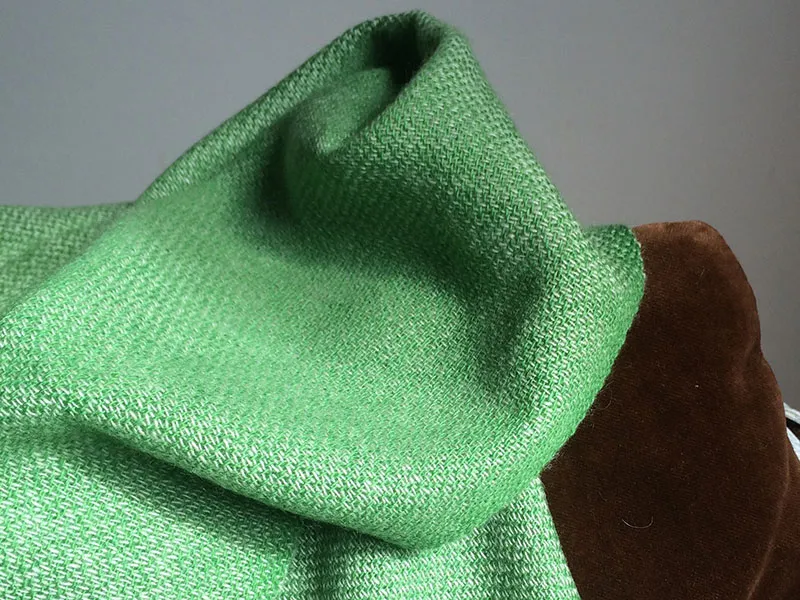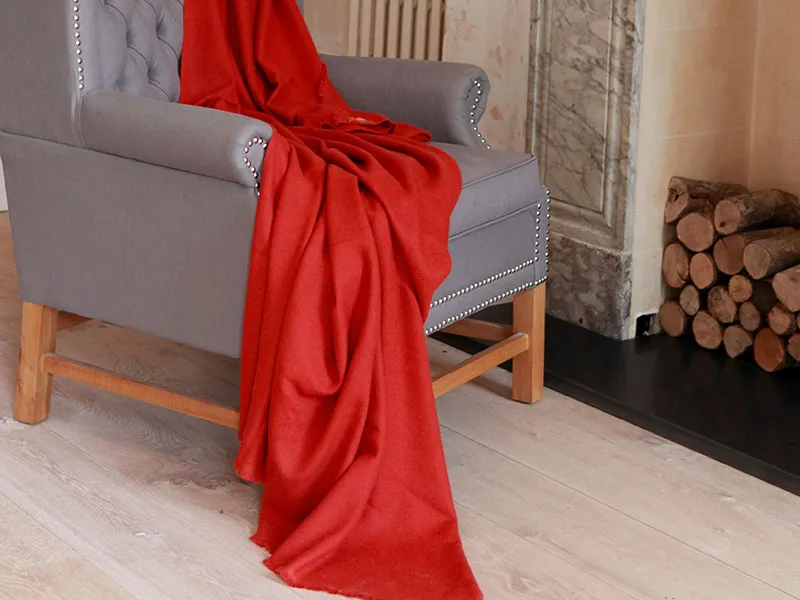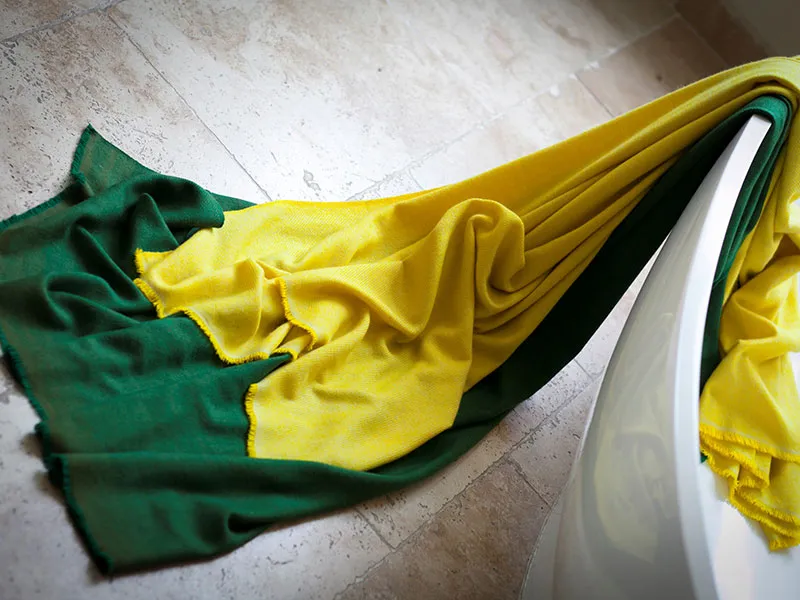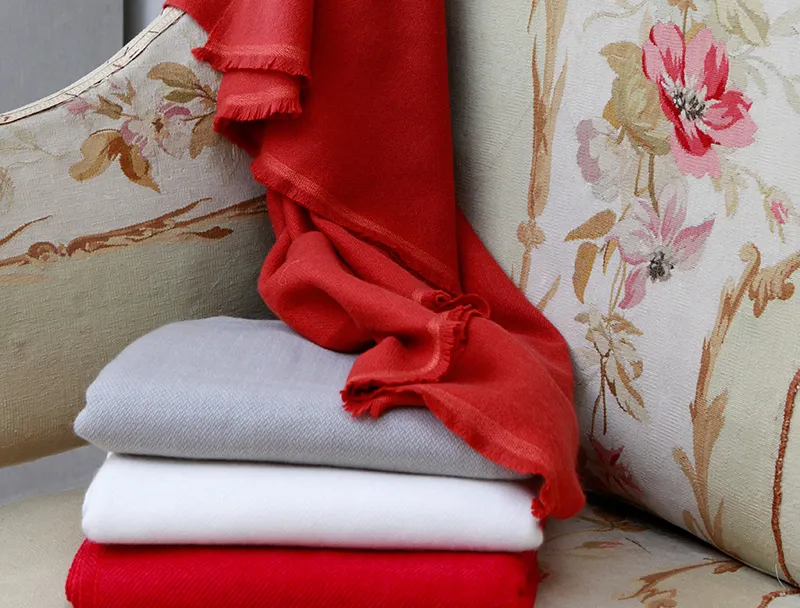One Goat, One Scarf
one goat one scarf one year – waste and seeds of change
UK throws away on average £400,000 worth of clothes every day and enough food every year to feed Africa. USA last year we sent 10.5 million tons of clothing to the landfill.
These figures are alarming in so many ways.
Clothing sent to landfill is toxic for the environment; some fibres will never decompose while others release a variety of harmful gases that contribute to climate change. Further, by discarding clothes, we are throwing away the hard work that has gone into making them, the resources used to produce them and the environmental footprint that has been made to deliver them to our high streets. Waste on this level is unnecessary and preventable.
Celebrity chef turned eco warrior Hugh Fearnley-Whittingstall and the BBC in a recent series called ‘War On Waste’ highlighted the amount of food and textiles that are thrown away on a daily basis. Hugh is on a mission to change the way we think about waste, by challenging the supermarkets and fast food industry to drastically reduce the amount of waste they generate.
‘We live in a country where one third of the food we produce never gets eaten, the average household bins £700 per year’ Says Hugh. ‘Making sure we have enough food for the future and looking after our planet is so important and reducing food waste is a part of that.”
In the final episode Hugh managed to feed 200 unsuspecting people with a home made bin banquet. A full buffet prepared entirely from food that he and his researcher had fished out of bins in supermarket car parks. The contents of the Waitrose bins were shockingly impressive.
Not everyone knows why people choose organic cotton instead of the conventional yarn, as not everyone knows that the 3% of the world’s farmland dedicated to conventionally grown cotton is using 25% of the world’s chemical pesticides.
Some of these chemicals are even considered to be the most toxic chemicals in the world. However, less than 10% of the chemicals applied to cotton is actually spent on pest control. The rest is absorbed into the cotton plant, the soil, water and eventually to animals, humans and the entire eco-system.
The US Environmental Protection Agency (EPA) estimated that one to two million birds are killed annually by carbofuran, one of the insecticides routinely used on cotton. This is only part of the story because cotton processing utilizes chlorine bleach, heavy metal dyes and formaldehyde resins, and all cause damage to the environment. Not only that, chemical residue on the manufactured garments can cause skin irritation, rashes, headaches and dizziness.
It all painted a very sorry picture of the retailers who waste the goods and we, the consumers who drive their behaviour.
Fast fashion and food does not allow consumers to seek out quality, so much is available so cheaply. But it all comes at a huge cost.
In the UK alone we throw away 35kg of clothes per person per year, that is one massive suitcase stuffed full – per person! Dumped. Maybe if we all saw it we would be shocked into action. M&S wonderful ‘shwopping’ campaign with Joanna Lumley did just this by covering the whole of Brick Lane in London with clothes showing the amount that is thrown away every 5 minutes!
Whether it is food or fashion, in order to cut down costs, fast retailers sacrifice quality for quantity and speed to market. They either source from cheaper countries or set up their own factories there.
The tragedy in Bangladesh a few years ago has exposed the dark side behind all the glamour and shine of fashion – how such cheap clothing was made and under what sort of working conditions. Even though the retailers are not directly appointing unqualified factories to produce their clothes, there should be no shirking of their responsibility.
The fashion cycle has evolved from twice a year to every few weeks, and retailers press for an ever-shorter delivery time. With or without their acknowledgement, factories either ask their workers to work extra hours or outsource some of the work to other factories, to keep up with the impossible targets.
It makes perfect sense that the factories will choose to outsource to a cheaper factory. So even though the unqualified factories can’t get deals from the brands directly, they can still survive under the new fast-fashion cycle. And in this case, the transparency of the supply chain has become more important than ever. The sense of ethical fashion is vital.
Ethical fashion, a new concept in recent years, not only focuses on the sustainability of fashion products, but also on the production processes, materials, fair trade, and even the design and technology involved. The cotton industry is a good example of an industry with change at the helm.
On the other hand, organic cotton involves strict production guidelines. These usually include: the field must be pesticide-free for at least three years and be free from toxic chemicals; a certain amount of organic content may be used (95% by USDA, for example); it also has to be eco-friendly processing, with non-chlorine bleach, silicon-free softeners, azo-free dyes, etc. These result in a cleaner, healthier, more balanced and sustainable environment as well as products for us and our children.
According to a survey by Ethical Fashion Forum (EEF) in 2011, the organic-cotton market grew by 72% to £177 million over the past two years. A significant proportion of a surveys respondents also placed the onus for sustainability on companies. For example, 61% of women feel “it is important that a company acts ethically” (Mintel, Ethical Clothing – UK 2009).
World fast-fashion giant H&M launched its first ever organic-cotton lines in 2010 and 2011. The giant takes very bold steps on this issue and states that their mission is to use organic cotton only for all products by 2020. Despite a scandal surrounding contaminated sources of organic cotton, H&M continues its battle on this agenda and is actively involved in the Better Cotton Initiative (BCI), a cross-industry body that advocates sustainable production and the usage of cotton for environmental protection and conservation.
Apart from the chain stores’ actions, more and more smaller scale shops are now offering organic-cotton products, particularly in the baby’s and kids segments.
The aspiration for ethical fashion continues to rise; probably it is now time for more retailers, wholesalers and fashion buyers to respond positively.
British ethical designer Katherine Hamnett, CBE recently mentioned ‘50% of M&S consumers are concerned, have got environmental concerns. Something like 85% are concerned about child labour, 75% are concerned about ‘sweated labour, 30% are ‘conscientious abstainers that is people that not bought something because they are concerned about where it is made. The big retail giants like Tesco take notice of anything that is over 30%. So the growth in ethical fashion is not coming from designers saying ‘I am going to be good now’ consumers are actually beginning to force retailers to go along this path or go out of business.’
The luxury sector is also being forced to redefine their market as more and more is copied and their consumers demographic is changing.
2015 propelled the industry forward when it comes to how they think about sustainability. The biggest shift, (and one of the most important ones to help accelerate changes) is the rise in demand from investment communities for sustainable business models. For years, investors have focused on a company’s financial performance and determined if purchasing stock was worth it based on if the company was profitable. Now, sustainable investing strategies are growing, as investors are realising that performance is intertwined in future social and environmental impact.
C-suites are starting to realise that in order to keep creating value, and accelerating growth they must invest in and improve how their company impacts society as a whole, and most importantly how they communicate that positive impact.
2015 was also the year governments and world leaders took action too. With the launch of the Sustainability Development Goals, COP 21, and the passing of the Modern Slavery Act, creating, maintaining and growing companies with a positive social and environmental impact will soon become a legal obligation.
All these changes have left luxury companies with no option but to improve as the potential for sales and stocks to plummet increases, and the hand of the law hangs over them.
The fashion world is being dragged kicking and screaming into change. Luxury companies have realised that they only have one way to go in order to have a point of difference and that is the creation of collections that take time, maybe hand crafted, certainly slow design is on the rise and the seeds of change are sprouting in an industry fraught with environmental damage.


“take, make, and dispose—for years that has been the developed world’s economic model. this consumption cycle led the world bank to estimate that the globe was on track to produce 6 million metric tons of solid waste per day by 2025, up from 3.5 million metric tons in 2010.”
“according to the un, without immediate action from the fashion industry, clean water will no longer be an accessible resource by 2030 for half of the world’s population. this is not acceptable.”

